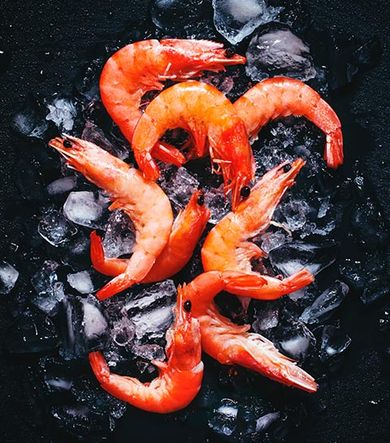Interesting Facts & Safety Tips for Seafood
Oceans…source of life: We could go on and on with interesting facts about the ocean as it is an unbelievable source of all kinds of life. Oceans occupy over 70% of the living space in our planet.
It is important to learn to appreciate and take care of it. Even small actions like not throwing plastic bottles, cans and other objects that do not belong in the ocean can help. Telling a child or a friend helps to spread the word about the importance of taking good care of such an important source of life in our planet.
Each one of us can make a difference…let us start now!
Did you know?
- Sharks never get sick as they are immune to all known diseases, including cancer. Their body frames are not made up of bones; they are made of cartilage, the tough, fibrous tissue that shapes our noses and ears. Instead of scales, shark skins have small tooth-like spikes that are so sharp that shark skin has long been used as sandpaper. Sharks are the only fish that have eyelids.
- Considering that the US has a population of 300 million, your odds of being a victim of a shark attack are 1 in 8 million.
- There are over 25,000 known species of fish.
- Fish have been around for 450 to 500 million years, a relatively recent point in the geological timeline as life began in the seas 3.1billion to 3.4 billion years ago.
- Horseshoe crabs have existed in essentially the same form for the past 135 million years. Their blood provides a valuable test for toxins that cause septic shock, which previously led to half of all hospital-acquired infections and one-fifth of all hospital deaths.
- Penguins speed under the water reaches up to 25 miles per hour.
- Oils from the orange roughly fish, from New Zealand, are used in making shampoo.
- Many fish can change sex during the course of their lives to ensure species survival, as the Great White shark as well as some other types of sharks, that change sex when they reach a certain size: males become females to ensure survival of their species.
- Many of the words and expressions we use every day as “like a fish out of water”, don’t give up the ship”, “full speed ahead”, “on deck”, “get the drift” …etc.…; come from maritime culture.
- The smallest fish is the tiny “Philippine Goby” which maximum size is 1/3”.
- The biggest shark is the “Whale Shark”. It is also the biggest fish in the ocean as it can grow up to 45 feet.
- The largest mammal in the ocean ever to inhabit the earth is the “Blue Whale”. This mammal lives in the ocean and can grow to 105 feet in length and 400,000 pounds in weight. The heart of a blue whale is about the size of a Honda Civic and its tongue can be compared to the size of a back patio large enough for 50 people to stand on. Despite of their size, they are harmless to humans.
- The baby blue whale drinks 50 gallons of its mother’s milk every day, gaining about 200 lbs. a day during its first year.
- There are more than 150 species of octopus, some reaching only 0.5” across, while the Pacific Octopus can grow up to 30 feet and 600 lbs. These animals are considered the smartest of all invertebrates. To avoid predators, they can disguise themselves using coconut shells and algae for example.
- Krill is probably one of the most plentiful food species (outside of insects) anywhere on earth.
Seafood Safety Tips:
- Seafood must smell fresh and mild, never “fishy”, sour or ammonia-like.
- Do not leave seafood out of the refrigerator for more than 2 hours or for more than 1 hour if temperatures are above 90 F. Bacteria that can cause illness to grow quickly at warm temperatures (bet. 40 F and 140 F)
- Avoid cross-contamination by washing all utensils and hands with soapy water.
- Always wash your hands “before” and “after” handling any raw food.
- It is recommended to use one cutting board only for raw foods and another only for ready-to-eat foods.
- Place cooked seafood on a clean plate for serving. If cooked foods are placed on an unwashed plate that previously held raw food, bacteria from raw food could contaminate cooked food. That includes all types of utensils, coolers, and food containers.
- Thaw frozen seafood gradually by placing it in the refrigerator overnight. In case it is necessary to thaw seafood quickly, either seal it in a plastic bag and immerse it in cold water or if the food will be cooked immediately thereafter, microwave it on the “Defrost” setting and stop the defrost cycle while fish is still icy but pliable.
- Most seafood should be cooked to an internal temperature of 145 F.
- It is always best to cook seafood thoroughly to minimize the risk of foodborne illness. However, if you choose to eat raw fish, one good tip is to eat fish that has been previously frozen as the freezing process kills any parasites that may be present. But be aware that freezing does not kill all microorganisms.
- By following simple basic rules, you will be protecting your health and of the people around you.
- Act safe and enjoy all the good nutrition and health that seafood can offer!
Source: http://www.fda.gov
(FDA – Food and Drug Administration)


